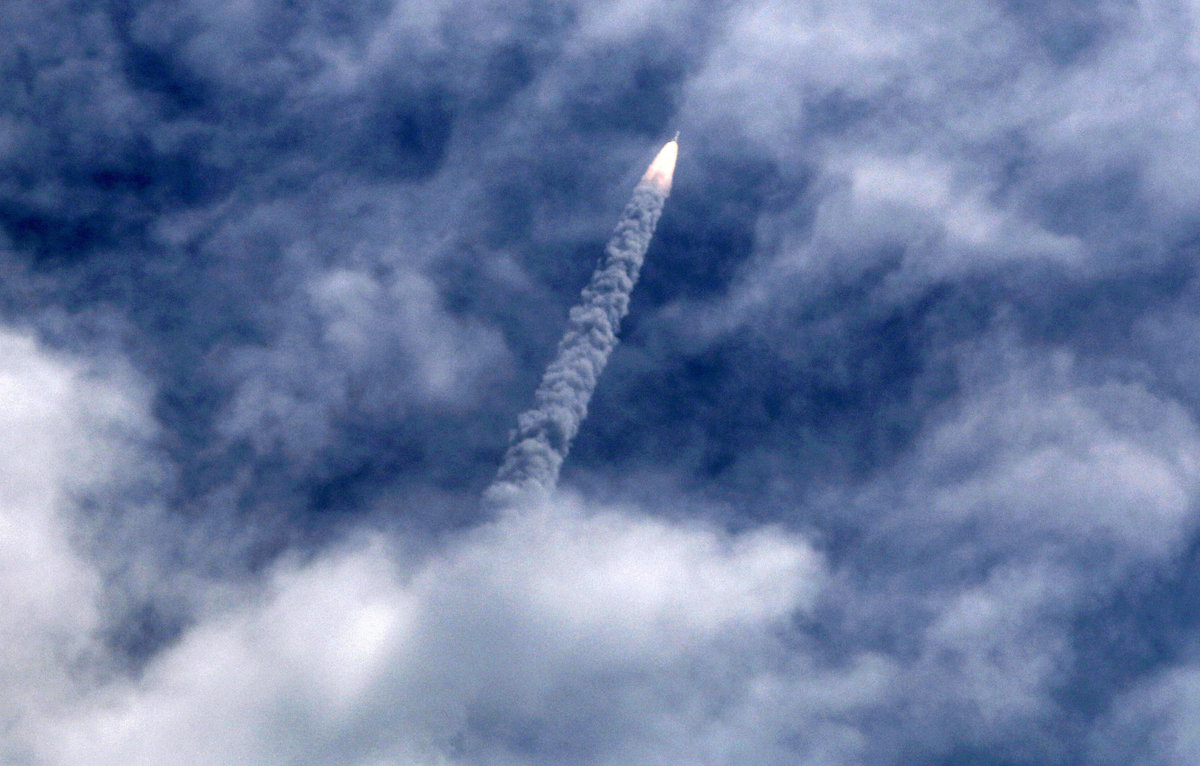ISRO launches Astrosat, India's first dedicated space observatory,
from Sriharikota
A Polar Satellite Launch Vehicle (PSLV-C30) carrying Astrosat and six other satellites lifted off from the Satish Dhawan Space Centre in Sriharikota at 10am.In around 25 minutes after liftoff, PSLV-C30 injected Astrosat and other satellites -- four US nano satellites, a microsatellite from Indonesia a nanosatellite from Canada - into their respective orbits. This is the first time India is launching a US satellite.
Astrosat was placed in an orbit 644.651km from earth, as desired. The satellite achieved an expected inclination of 6.002 degree.
"The mission is successful. It is a well-professed and synchronous efforts." Satish Dhawan Space Centre director P Kunhikrishnan said after the launch. ISRO's website lists out the objective of the observatory: to understand high energy processes in binary star systems containing neutron stars and black holes, estimate magnetic fields of neutron stars, study star birth regions and high energy processes in star systems lying beyond our galaxy, detect new briefly bright x-ray sources in the sky and perform limited deep field survey of the universe in the ultraviolet region.
Carrying five payloads, Astrosat is capable of observing the sky in the visible, near ultraviolet (UV) and far UV regions of the electromagnetic spectrum.
The two telescopes on the Ultraviolet Imaging Telescope (UVIT) payload are designed to achieve an excellent image resolution, while the other four payloads have their specific roles.
The other payloads are Large X-Ray Proportional Counter (LAXPC), Soft x-ray Telescope (SXT), Cadmium Zinc Telluride Imager (CZTI) and Charge Particle Monitor (CPM). ASTROSAT carries the following five payloads.
(2) Large Area X-ray
Proportional Counter (LAXPC, is designed for study the variations in the
emission of X-rays from sources like X-ray binaries, Active Galactic
Nuclei and other cosmic sources.
(3) Soft X-ray
Telescope (SXT) is designed for studying how the X-ray spectrum of 0.3-8
keV range coming from distant celestial bodies varies with time.
(4)
Cadmium Zinc Telluride Imager (CZTI), functioning in the X-ray region,
extends the capability of the satellite to sense X-rays of high energy
in 10-100 keV range.
(5) Scanning Sky Monitor (SSM)
is intended to scan the sky for long term monitoring of bright X-ray
sources in binary stars, and for the detection and location of sources
that become bright in X-rays for a short duration of time. According to
Dr. Bhalerao, LAXPC is the best X-ray timing instrument so far.
“Astronomical objects cannot be controlled. If you want to study
something in a star, must catch it in its act. So it is important to
monitor the sky,” he said about the Scanning Sky Monitor.
India's Polar Satellite Launch Vehicle (PSLV-C30) lifts off from the Satish Dhawan Space Centre in Sriharikota, South India, Monday, Sept. 28, 2015. PSLV-C30 mission included the launching of India's space observatory satellite Astrosat. The Astrosat, which has a mission life of five years, will send its data to a control center in the southern Indian city of Bangalore.

India's Polar Satellite Launch Vehicle (PSLV-C30) lifts off from the Satish Dhawan Space Centre in Sriharikota, South India, Monday, Sept. 28, 2015. PSLV-C30 mission included the launching of India's space observatory satellite Astrosat. The Astrosat, which has a mission life of five years, will send its data to a control center in the southern Indian city of Bangalore.

No comments:
Post a Comment